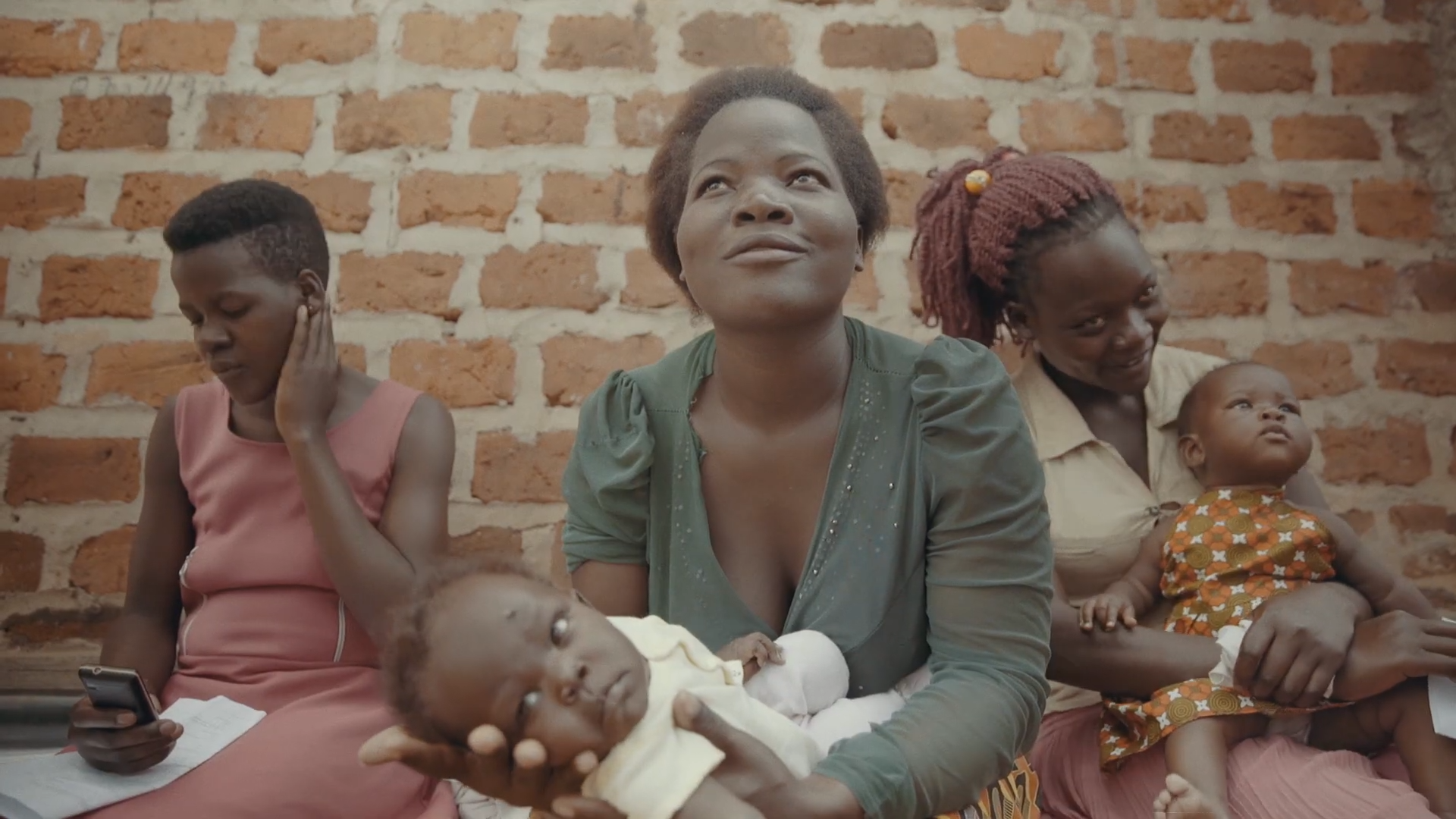Compassionate Care
Learning from exemplars in global health to promote human flourishing
Part II

In 2020, Templeton World Charity Foundation announced a bold, new commitment to support research on human flourishing. The Focus Area for Compassion and Ethics (FACE) at The Task Force for Global Health was one of 11 inaugural awardees.
Working alongside colleagues at the Harvard University Human Flourishing Program, World Health Organization, University of Calgary Compassion Research Lab, Leapfrog to Value, and Emory University, FACE aimed to understand how compassion alleviates suffering and promotes flourishing in healthcare settings.
One key component of this work involved learning from exemplars of compassion in healthcare settings around the world. This is the second installment of a series of vignettes that summarize the insights we gleaned from interviews with seven exemplar organizations.
In sharing these learnings, we hope to energize discussion and catalyze efforts to cultivate compassion in global health to foster human flourishing.
Check out Part One of this series if you missed it!
Insight 5:
Compassionate environments result from collective, intentional efforts.

Compassionate care doesn't just happen. It requires thought, intention, and follow-through. Intentional efforts to cultivate compassionate environments are one of the distinguishing features of compassionate exemplar organizations.
Center for the Rehabilitation of the Paralysed (CRP) was established in 1979 to fill a gap in rehabilitative services for people with disabilities in Dhaka, Bangladesh. But more than that, its founder, Dr. Valerie A. Taylor, a physiotherapist from the UK, set out to create a model of compassionate care.
"She made an environment where our staff understood that we need to give special care with empathy, respect, and dignity," explains Dr. Mohammed Hossain, Executive Director of CRP. "This is not similar to other services in Bangladesh."
"Our staff are very aware that if I'm working at CRP, patients are our first priority, and we should be very caring to the patients."
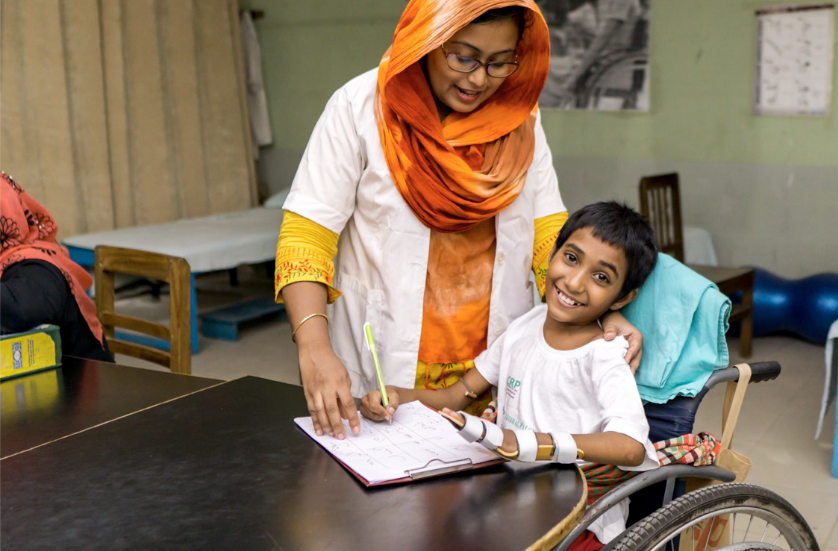
CRP's intention to create a compassionate environment begins in their patient-centric medical training program. It's here that rehabilitation health professionals begin to learn the importance of caring for the patient.
Staff recruitment also looks different at CRP. They look beyond technical qualifications to also consider applicants' compassionate capacity. "We interview them [to see] whether they are able to work an in environment of sharing and caring and working in an interdisciplinary team," explains Dr. Hossain.
Once onboarded, staff spend time each day collectively reflecting on their core values. At the morning meeting in each department, they spend the first 5 to 15 minutes discussing whether their regular activities are aligned with CRP's core values of sensitivity, collaboration, compassion, respect, cleanliness, and commitment to excellence.
Sharing with each other is one of the important aspects of how we care for the patients.
Biweekly staff meetings also offer CRP staff an opportunity to share difficulties they may be encountering and to collaborate in resolving them. The Head of Human Resources, Abeda Sultana, describes this further, "The structured sharing sessions in each unit [enable staff] to share their everyday problems, decisions, solutions. So we can easily share our thoughts and give recommendations for the betterment of our clients and our services."
Finally, CRP is an environment that feels safe to staff — a key prerequisite for compassion to arise. Safe to share ideas and feedback, safe from gender-based discrimination and harm, and free from corruption and coercion. It's also a meaningful environment where staff are able to live out their purpose and feel they have agency and self-actualization in the workplace.
CRP is my second home. When I'm with my team, I feel it's my family. We always try to help each other, as family does. We also tell them how to solve problems — it makes the task easier. Also, our collaborative working environment and cooperative colleagues help us to enjoy our work life at CRP.
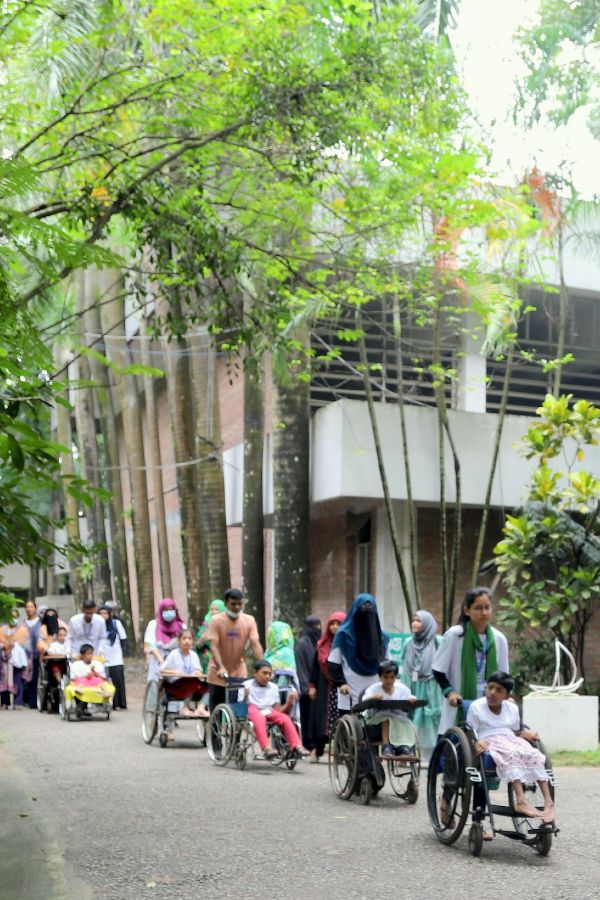
Media credit: Center for the Rehabilitation of the Paralysed
Media credit: Center for the Rehabilitation of the Paralysed

Media credit: Center for the Rehabilitation of the Paralysed
Media credit: Center for the Rehabilitation of the Paralysed
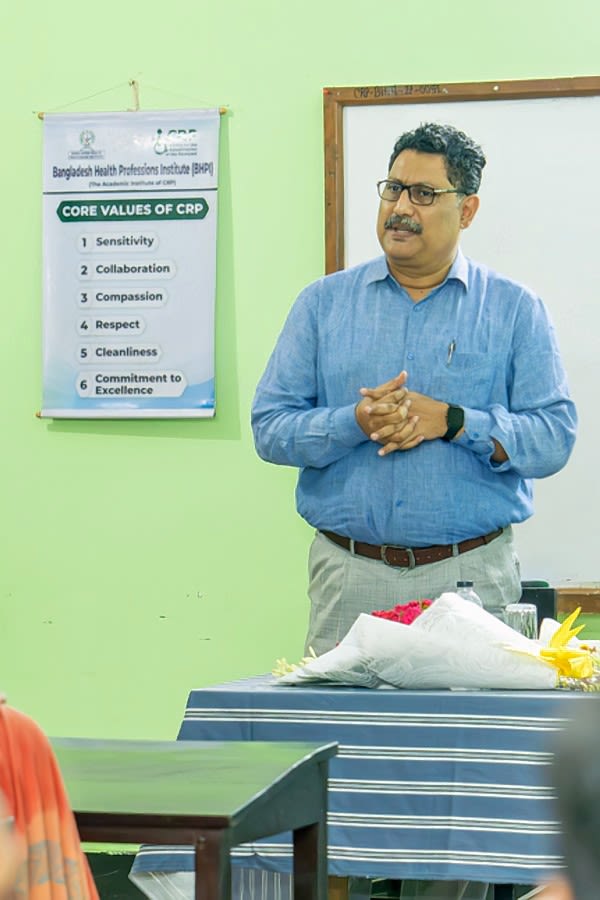
Media credit: Center for the Rehabilitation of the Paralysed
Media credit: Center for the Rehabilitation of the Paralysed
CRP's novel approach to patient care in Bangladesh gives rise to and emerges from a compassionate environment. CRP strives for exceptional quality of care by co-creating a treatment plan with patients, families, staff, and the larger community.

Compassionate exemplars recognize the importance of deeply listening to patients' needs and realities to shape a treatment plan with — not for — them.
"We work in a team," Dr. Hossain explains, "The physiotherapist, occupational therapist, speech and language therapist, counselor, medical doctor, and nurses work together to assess the patient, sit with them and discuss if it is doable, and make a participatory plan." He goes on to share that the team approach did not used to be common in Bangladesh, but through CRP's modeling has now caught on among other service providers.
CRP understands that patients also need accompaniment in healing their emotional, social, and psychological wounds, so their treatment plans extend beyond simply addressing limits to mobility.
“We have to listen. Those who are suffering want to tell [us] something — their pain, their family issues, their health issues. When they feel, ‘They are listening to me,’ they come up with a trust relationship.”
And when a patient is ready to be discharged from facility-based care, they co-create a community integration plan to ensure successful re-entry.
Though they don't have any specific metrics of compassionate care, CRP teams regularly discuss patient complaints and how they can improve patient well-being.
"We hear from many patients that CRP staff are very caring. [They say,] 'When we go to CRP our suffering, pain, and other discomfort are reduced because of the care that CRP staff provide,'" Dr. Hossain reflects.
A safe, meaningful, and collaborative environment for staff. Daily practices that reify their core values. And a team-based, holistic, patient-centric, and participatory model of care. These collective, intentional efforts enable compassion to flow and the humans that interact with CRP to flourish.

Media credit: Center for the Rehabilitation of the Paralysed
Media credit: Center for the Rehabilitation of the Paralysed
Insight 6:
Serving others rewards those who serve.

When Dr. Bibi Khoyratty moved from Mauritius to Minneapolis, MN in 1990, she noticed a pattern in her community of Indian/Pakistani immigrants. When their parents and other family visited from abroad for extended periods, they had no access to healthcare.
Acute medical needs would arise during the course of their stay or they needed to manage chronic conditions. But without insurance, the emergency room was often their only recourse and too costly for most. As a physician, she was concerned.
Inspired by witnessing her parents help community members growing up, an idea sparked in Dr. Khoyratty to open a free clinic. Things fell into place quickly. The same day, she visited a new space her mosque had purchased where she could offer medical services. The clinic where she was practicing donated furniture they were discarding. And she emailed members of her mosque asking who was willing to volunteer their clinical skills. Within two weeks the clinic was open.
Our goal is to offer comfort to the whole family. We help make people feel like they belong and feel safe.
When it opened, Rahma Community Clinic offered care not only to family visiting from abroad, but also to any community members struggling to access affordable health care. They went from seeing 3 to 4 patients a day, up to 10 patients a day, and it continued to grow.
More than 15 years later, a rotating roster of over 40 volunteer physicians with multiple specialities still serve the un- and under-insured every Saturday.
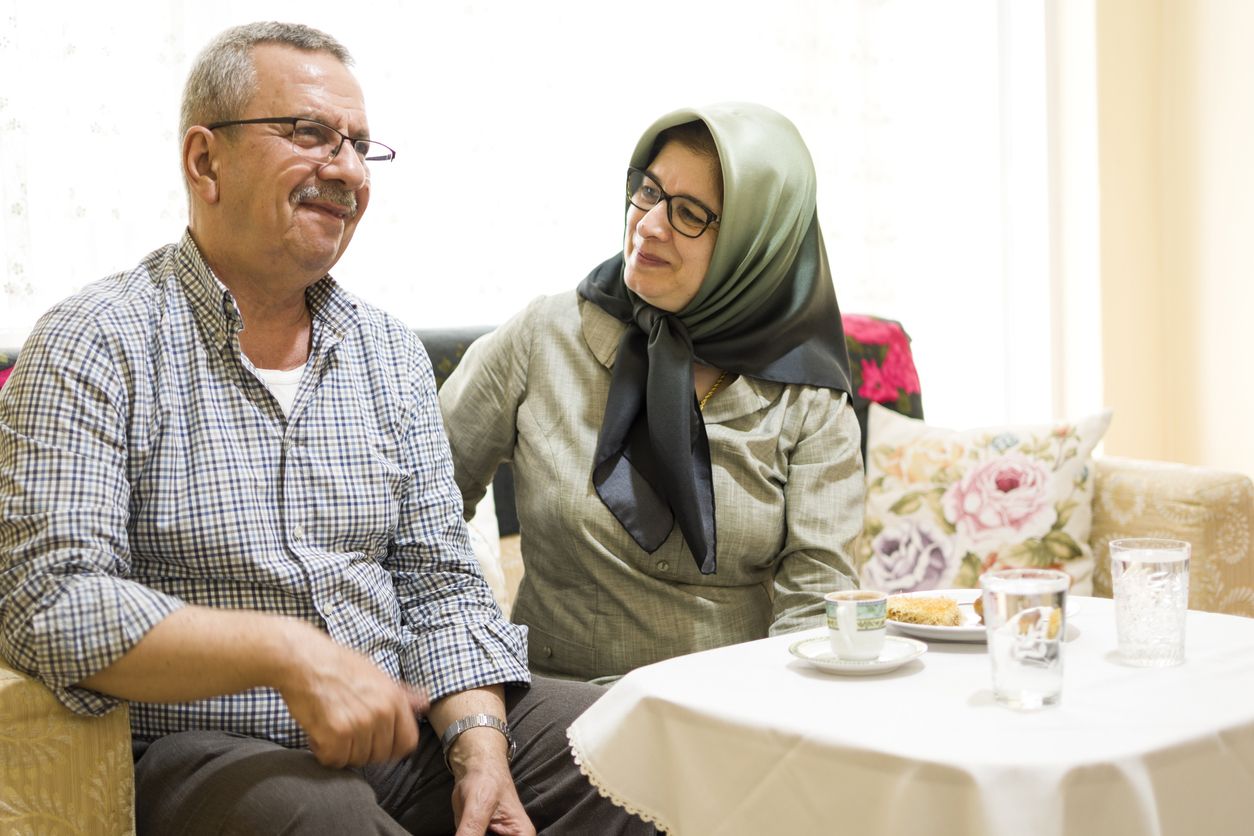
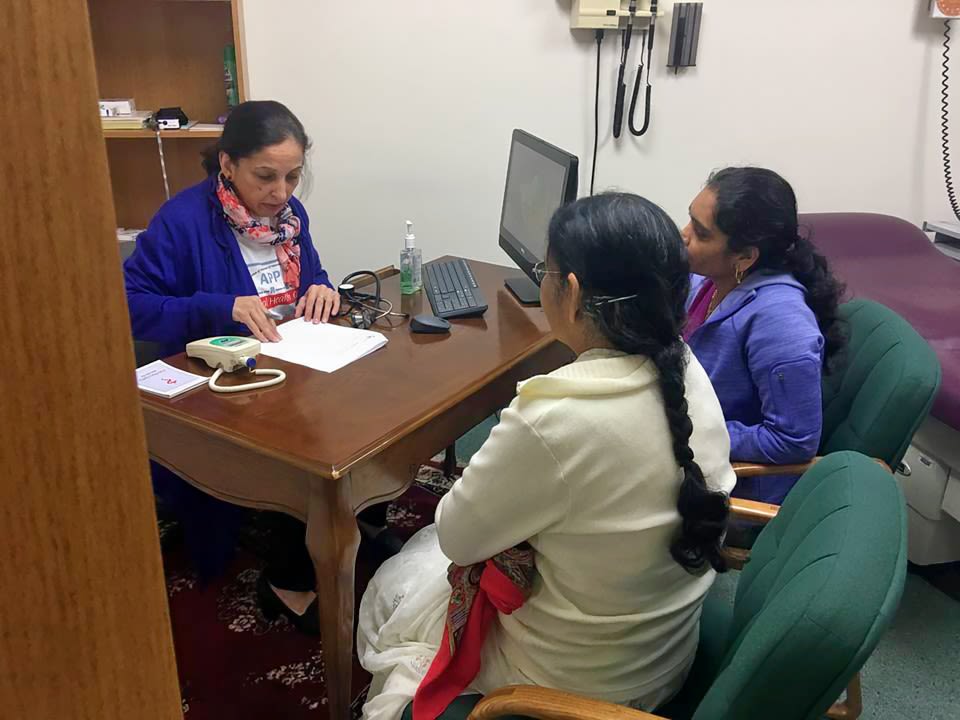
Dr. Khoyratty led Rahma as its Medical Director for 7 years, pouring her time, energy, commitment, and coordination into the volunteer operation. When asked how she cares for herself, Dr. Khoyratty explained the importance of reconnecting within before reconnecting with her family when she gets home at the end of the day.
"I realize that I do have to be there for myself, too. I have my routine when I get home. Nature helps me to reconnect with myself, to re-energize. The first thing I do is kick off my shoes, go to my garden, feel the grass, and smell the roses."
She also declared that, ultimately, being of service to others is what fills her cup.
Doing this is caring for myself. Being able to give, being able to help people is so rewarding. It takes care of your heart and your mind and your spirit.
She says her volunteer clinicians feel the same way. "Being a doctor, you innately want to help. I've never had anybody say, 'I don't have the time for this.' I have physicians who are mothers and come to the clinic with their children to volunteer.
"Some come once a month, some come once a year. But they all say, 'Thank you for giving me this opportunity. This was amazing that I was able to help somebody.'"
"It's an entirely different reward to provide care like this."

Insight 7:
Compassionate environments may vary, but all evoke similar feelings.
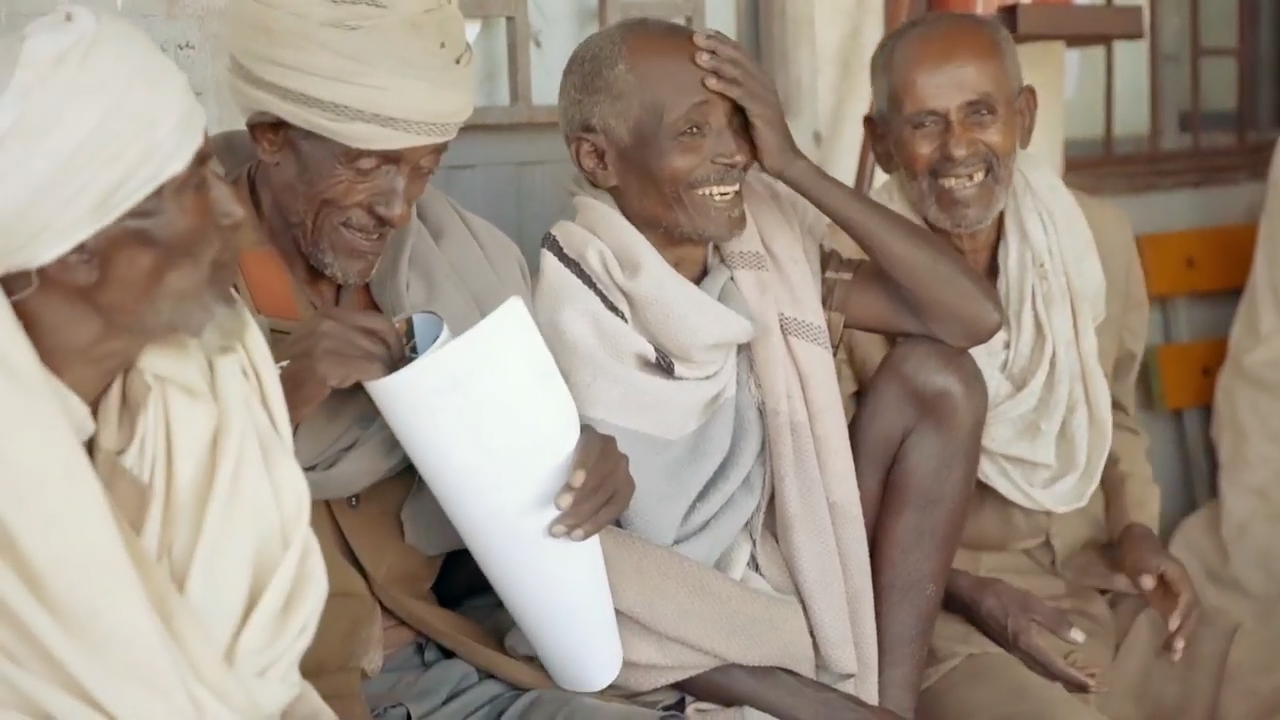
Can you describe a compassionate organization?
What does it look like?
Feel like?
How do the staff treat the people they serve?
How do they treat each other?
IZUMI Foundation is a US-based philanthropy founded by a Japanese Buddhist order dedicated to improving health and healthcare for communities across the world. The challenge? Determining which organizations embody their core values of compassion, concern for others, and altruism.
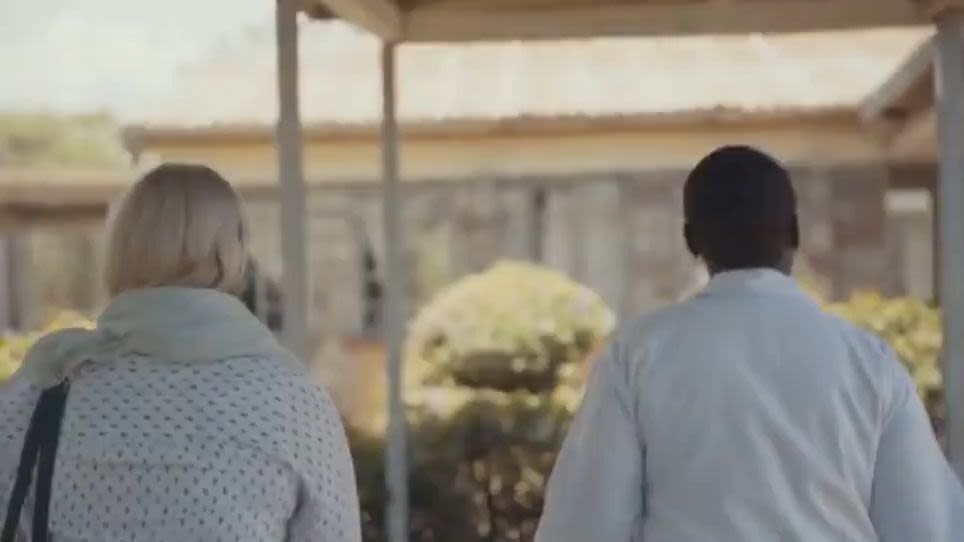
IZUMI doesn't have specific "compassion criteria" that organizations must have to qualify for funding. Instead, Dr. Gretchen Stoddard, Managing Director of IZUMI, explains the importance of observation, relationship, and sensing the presence of compassion when making funding decisions.
You can ask questions directly about compassion or care, but [the applicants'] actions or way they respond gives you insight. Observing the services they provide is much more revealing than asking in an interview. Site visits and relationship-building are very important.
Dr. Stoddard also describes several characteristics that are consistently present among the organizations they fund.
Embodied leadership is one such characteristic. Though the organizations IZUMI funds may vary in structure and degrees of hierarchy, Dr. Stoddard described individuals in leadership positions who are authentic, self-reflective, seek feedback, and encourage diverse participation from all levels of staff to contribute to the strategic direction of the organization.
"If I had to bucket some of the things we think about, leadership is one of them. Leadership and compassion have to fit together in a way that feels authentic and consistent and real to us."

Another characteristic is deep humility. Many organizations struggle to label themselves or their actions as particularly “compassionate." Dr. Stoddard commented that applicant organizations sometimes don't even consider certain aspects of their programming worth mentioning.
"We work with a group in Rwanda that provides nutrition and medical services. Their staff created a voluntary funding pool to support community initiatives outside of their core mission. Now the organization even matches what the staff contribute. I think this is such an amazing example of compassion, and they don't even talk about this program!"
Humility is such an important piece of how we look at organizations and their leadership. It's tied to compassion. We tend to find some of the most humble people are truly some of the best partners.
Additionally, IZUMI has noticed a deep commitment to staff wellness among the organizations they fund. This includes organizations that intentionally create supportive environments for well-trained and passionate staff — to help people realize there is a different way to provide care than the scarcity-minded burnout culture that sometimes permeates health systems. But this goes beyond capacity-building to recognizing the importance of truly caring for staff as humans.
"One thing that is common among all groups is [the recognition] that they need to support their staff. Groups especially learned this during the pandemic more so than any other time."

A growth mindset is also characteristic of IZUMI's grantee partners. This might show up as intentional, caring leadership transitions or the ways in which organizations foster collective and individual learning opportunities for staff.
You want an organization to grow. You are hoping there will be an organizational evolution while still maintaining its values. Part of our compassionate approach is to give an organization space to change.
Finally, organizations embody the value of relationality. Dr. Stoddard describes how this is revealed as she tours health facilities. Does the senior doctor escorting her assume an air of importance such that they can't be bothered by the patients they encounter? Or do they continue to treat even the most vulnerable members of the community with warmth and dignity?
She also finds it revealed in the way different levels of staff treat each other. "What's acceptable and what's the norm reflects the culture of the organization and their appreciation of people," Dr. Stoddard comments.
For IZUMI, each touchpoint with a grantee serves as a reminder of the potency of these compassionate environments. And furthermore, a catalyst for them to reflect internally and challenge themselves to continually become a more compassionate organization.
It may be difficult to describe exactly what makes an organization compassionate, even when it is in front of you. Compassionate actions take many forms, and compassionate environments may vary in response to their context.
But what these environments share is the feeling they evoke — belonging, care, dignity, respect, and even love. Compassion is embodied, embedded, and engaged in a way that is sensed.
You can feel compassion.
Summary
Our final three compassionate exemplar organizations reveal to us additional learnings about the dimensions of compassionate care necessary for human flourishing. That compassionate environments require deliberate, collective efforts. That the act of serving others rewards the person providing care. And that despite differences in how organizations manifest compassion, one can easily feel the potency of a compassionate environment.
In this series, we have shared insights gleaned from conversations with seven health service organizations around the world. We hope they catalyze discussion within your own organizations to contemplate the ways compassion contributes to global human flourishing.
